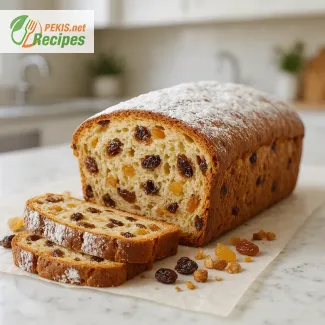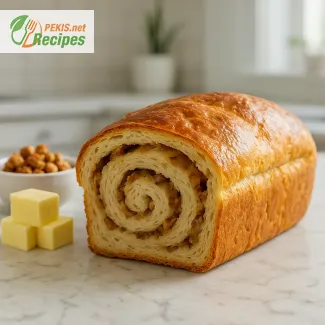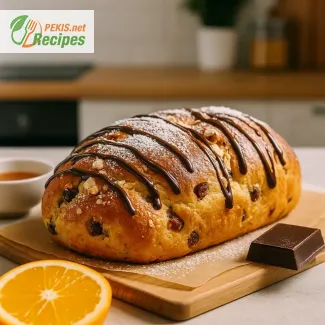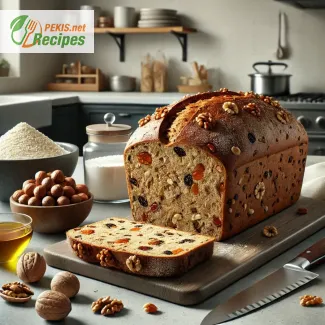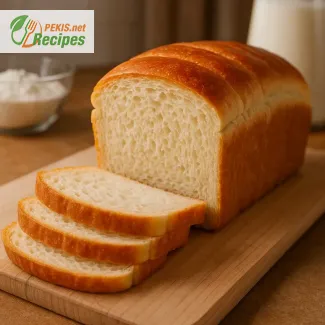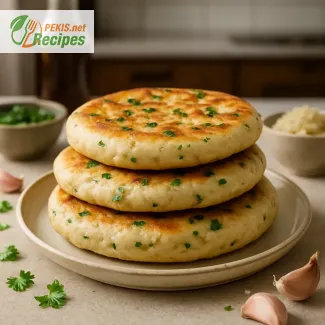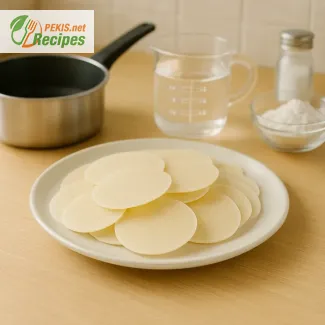
Discover the Sacred Simplicity of Homemade Communion Wafers
A Traditional Touch for Your Faithful Gatherings
There is something profoundly meaningful in preparing Communion wafers at home—a spiritual and culinary practice that brings tradition, reverence, and simplicity together in a single, thin, crisp bite. While these unleavened wafers are often associated with church rituals and solemn moments, making them from scratch offers a unique way to connect more intimately with your faith, your family, and the ritual itself. Whether you're preparing for a private ceremony, a small community service, or simply exploring sacred baking traditions, this wafer recipe offers a quiet beauty that resonates through centuries of spiritual observance.
Homemade Communion wafers are more than just symbolic bread; they represent dedication, purity, and the humble essence of ancient Christian rites. Typically made from only a few ingredients—flour and water—these delicate rounds remind us that the most meaningful experiences often come from the simplest beginnings. Their preparation is an art that combines minimalism with intention, resulting in a product that serves both a liturgical purpose and a deeper sense of spiritual reflection.
The tradition of breaking bread is foundational in Christianity, and while many associate the Eucharist with leavened or unleavened bread loaves, the wafer form has become central to many denominations. Their thin, crisp texture, subtle flavor, and sacramental shape make them instantly recognizable. By preparing these wafers at home, you not only recreate a sacred food but also contribute a personal touch to a moment of deep reverence.
As more people seek ways to observe faith in private or intimate settings, the appeal of homemade Eucharist bread continues to grow. These wafers are especially suitable for home churches, retreats, religious education classes, or even for individuals unable to attend mass in person. They store well, retain their texture, and can be made in larger batches with ease—adding practicality to their already profound significance.
From a culinary perspective, making wafers for Communion is also a gentle introduction to unleavened baking. The process requires attention and care, yet it is forgiving enough for beginners. You don’t need complex tools or elaborate techniques—just a clean working surface, a rolling pin, and a bit of quiet intention. Many find the act of rolling and cutting the dough meditative, a physical expression of prayer and mindfulness.
Beyond religious settings, some also enjoy using unleavened wafers in creative ways—paired with honey, served with dips, or as part of cultural or educational demonstrations of Christian history. However, it’s their sacred role in the Holy Communion that defines them. When shared with others, each wafer becomes a symbol of unity, remembrance, and grace.
This guide invites you to create Communion wafers from scratch, respecting centuries-old traditions while embracing the peace and simplicity of the process. Whether you are making them out of devotion, curiosity, or necessity, this recipe honors both the spiritual and practical dimensions of this age-old ritual. By preparing wafers in your own kitchen, you are stepping into a sacred act that has been repeated across generations and continents—a quiet, powerful reminder of faith in flour and water.
In the following recipe, you'll find clear instructions, tips for achieving the ideal wafer texture, and methods to store and preserve them for future use. Though modest in ingredients, these wafers carry immense meaning, perfect for any setting that seeks to connect more closely to the roots of Christian tradition.
Let this experience be more than just a culinary task—make it a moment of reflection, reverence, and grace.
- Mixing the dough:
In a medium bowl, combine all-purpose flour and salt. Gradually add water while stirring to form a smooth, slightly elastic dough. Knead briefly by hand if needed to bring the dough together. - Rolling out the dough:
On a clean, lightly floured surface, roll out the dough as thinly as possible—ideally under 2 mm (approximately 1/16 inch) in thickness. The thinner the dough, the crisper the wafers will be. - Cutting the wafers:
Use a round cookie cutter or a small glass (about 4 cm / 1.5 inch diameter) to cut out circles. You can reroll the dough scraps to use all of it. - Cooking:
Preheat a dry, non-stick skillet or griddle over medium heat. Place wafers in the skillet and cook for about 30–45 seconds per side, until they are firm and lightly golden but not browned. Avoid using oil or butter—these wafers must remain unleavened and free of fat. - Cooling and storing:
Transfer the cooked wafers to a wire rack to cool completely. Once cooled, store them in an airtight container in a dry place. They will keep for several weeks if properly stored.
Enhancing the Spiritual and Culinary Experience of Homemade Communion Wafers
Expert Tips and Modern Variations for a Time-Honored Recipe
The art of making Communion wafers at home is steeped in tradition, simplicity, and reverence. Yet even the most minimalist recipes offer room for improvement, personalization, and enhancement—without compromising their sacred purpose. With just three ingredients in the basic version—flour, water, and salt—the possibilities for subtle refinement are vast. Understanding how ingredient choices and preparation techniques affect the final outcome can elevate your wafers both in quality and spiritual significance.
The impact of flour selection on texture and flavor
The choice of flour has a direct influence on the texture, elasticity, and even flavor of the wafers. While traditional recipes call for all-purpose flour, exploring alternatives can create meaningful differences:
- Whole wheat flour adds a deeper, earthy note and boosts the fiber content. It results in a denser texture and slightly darker color, which some may find more wholesome and rustic.
- Pastry flour or cake flour can yield a softer, more delicate wafer, though these may be slightly more fragile and prone to breakage.
- Spelt flour offers a nuttier flavor while being easier to digest for some individuals, though it still contains gluten.
Experimenting with different types of flour can tailor the wafer’s structure to personal preference, as long as the unleavened requirement remains intact.
Adjusting salt for flavor balance
The standard recipe uses a minimal amount of salt, which is essential for balance. However, depending on taste and usage, the amount can be slightly adjusted. A pinch more salt enhances the flavor subtly, giving the wafers a cleaner, sharper profile—without overpowering their simple purity.
Avoid omitting salt entirely, as this can lead to bland results. On the other hand, too much salt disrupts the sacred simplicity and might not align with liturgical expectations. The key is maintaining a mild presence that supports, not dominates.
Infusing meaning through symbolic additions
While the base recipe is intentionally plain, there are ways to personalize wafers for non-liturgical use or private devotional purposes:
- A drop of olive oil can be added for richness, symbolizing peace and anointing. This softens the texture slightly, offering a more tender bite. However, this alters the traditional concept of unleavened bread and should be reserved for non-ceremonial use.
- Rose water or orange blossom water, used in minimal amounts (1–2 drops), can impart a delicate fragrance. These are especially fitting for spiritual retreats or reflective gatherings.
Always consider the context in which the wafers will be used—symbolic additions should only be introduced when the intention allows for variation.
Why homemade Communion wafers are more meaningful
Making Communion wafers by hand fosters a deeper spiritual connection and encourages mindfulness. Unlike mass-produced versions, homemade wafers are touched with personal care, time, and reverence. This practice turns preparation into a form of prayer or meditation, enhancing both the emotional and spiritual aspects of Communion.
Home preparation also allows for ingredient transparency, a benefit for those with dietary restrictions or food sensitivities. You control what goes into each wafer, which is especially important for families or individuals following stricter health guidelines.
Common mistakes to avoid when preparing wafers
Even simple recipes can go awry without attention to detail. Here are the most frequent errors and how to prevent them:
- Rolling the dough too thick results in soft, chewy wafers that lack the desired crispness.
- Overcooking turns wafers brown and brittle, detracting from their ceremonial look and feel.
- Undercooking leaves wafers flexible and too moist, leading to poor storage performance.
- Using too much flour during rolling may toughen the dough and leave dry patches on the surface.
Maintaining a consistent thickness and timing is essential. Use a rolling pin with guides or a pasta roller for even sheets, and always monitor heat levels during cooking.
Health-conscious alternatives without compromising tradition
For those seeking healthier options, it is possible to maintain the recipe’s spiritual purpose while improving its nutritional profile:
- Replace part of the flour with oat flour or quinoa flour for added nutrients and a more complex taste.
- Add flaxseed meal (1 tsp) to introduce omega-3s and improve digestibility, especially for those seeking added fiber and healthy fats.
- Low-sodium versions can be made by reducing the salt without removing it entirely, maintaining balance while supporting blood pressure control.
It’s essential to strike a balance between personal dietary goals and the integrity of the recipe’s purpose. These changes are best suited for educational settings, family worship, or informal devotional use.
Texture and moisture control for longer shelf life
To ensure the longest shelf life, wafers must be completely dried. Even slight residual moisture can cause spoilage or mold over time. Ensure proper cooling on a wire rack, and store wafers in an airtight container with a silica gel packet or dry rice to absorb moisture.
If you live in a humid climate, consider placing the wafers in a low oven (around 80°C / 175°F) for 5 minutes after pan cooking, to ensure complete dryness without altering the texture.
Creative ways to use leftover or broken wafers
Though these wafers are traditionally reserved for sacred use, extra or broken ones can serve other purposes when not consecrated:
- Crushed wafers can be used as a gluten-free breadcrumb alternative for coating or garnish.
- Serve with honey or jam for a light and symbolic snack.
- Use them in religious education as tactile learning tools for children or faith-based workshops.
These ideas honor the effort behind making them while preventing unnecessary waste.
Refining your Communion wafer preparation
Refining the process of making Communion wafers is not about reinventing a sacred tradition—it’s about approaching it with deeper understanding, intentionality, and care. Through mindful ingredient selection, proper technique, and respectful experimentation, the wafers can become even more meaningful, both spiritually and personally.
With each small refinement, your homemade wafers embody both tradition and heart, uniting ritual and craftsmanship in the most reverent of ways.
Allergens and gluten content:
This recipe contains gluten due to the presence of all-purpose flour. It is free from dairy, eggs, nuts, and soy.
Substitution tips for allergens and gluten:
- To make this recipe gluten-free, substitute the all-purpose flour with a certified gluten-free flour blend that is suitable for unleavened baking. Avoid blends with baking powder or leavening agents.
- Add ½ tsp of xanthan gum to improve texture when using gluten-free flour.
- Iron: 0.2 mg – contributes to oxygen transport in blood and energy production
- Magnesium: 2 mg – supports muscle function and nervous system regulation
- Phosphorus: 5 mg – essential for cell repair and bone health
- Vitamin B1 (Thiamine): 0.02 mg – helps with carbohydrate metabolism and brain function
- Selenium: 0.3 µg – plays a role in protecting cells from oxidative stress
- Manganese: 0.01 mg – contributes to collagen production and fights free radicals
